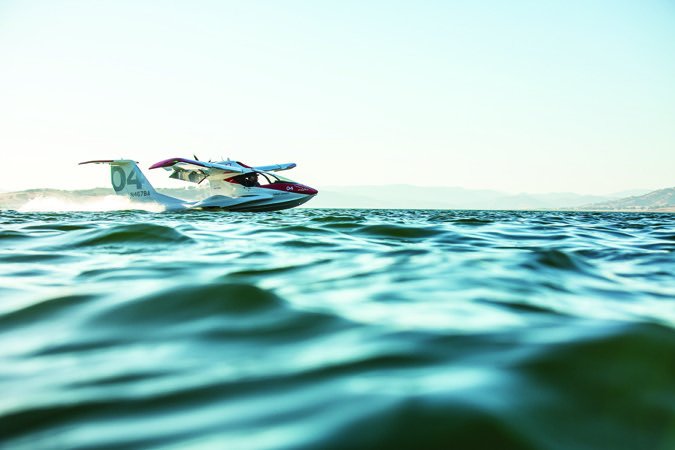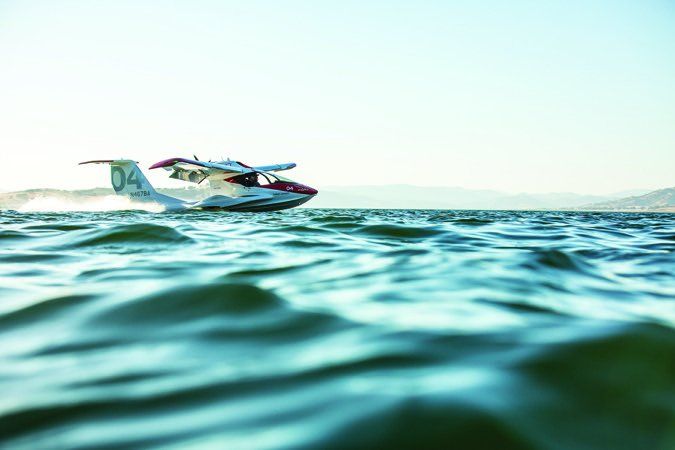Thanks for the opportunity to comment on Robert Wright’s article in the March 2018 issue, “The ICON A5.”
First my condolences and prayers go out to the entire Halladay family; his was a tragic loss.
I commend Mr. Wright on his emphasizing risk management awareness, not only regarding the A5 but similar general aviation safety issues. Unlike many light sport aircraft that I am familiar with, the A5’s inherent engineering design and safety features are second to none.
The A5 is a light sport aircraft (LSA), but also has retractable tricycle landing gear and a ballistic airframe parachute similar to the Cirrus line. It can burn both 100LL avgas and automobile gasoline. It’s spin resistant.
Again, as the author has, I would like to emphasize that the A5 was designed as a recreational aircraft to “appeal to a broad section of the current aviation community” but also appeal to a market of non-pilots. So I agree the A5 was designed on recreation and not to compete in the “GA” market of aircraft capable of larger fuel and useful loads for long cross-country flights.
But ICON is fully aware of both the transitional pilots and non-pilot market potential and integrating them quite effectively.

Like Mr. Wright, I took training at ICON’s facility at Tampa’s Peter O. Knight Airport (KTPF). I received the A5 training manuals a few days before training started, so I had the weekend to plow through them and learn what to expect during my training.
The first day’s morning was ground school. The instructor drove home the importance of concentrating and developing risk management skills, not only for the A5 but any newly acquired aircraft. Then the week of training was intensely satisfying and one will really appreciate the excellent handling and the A5’s performance. We practiced over and over again all kinds of landings (glassy water landings were my favorite), step and plow taxiing, plus a short cross-country to Kidney Lake with a glassy water landing.
As a transitional pilot who currently owns and flies an A-36 Bonanza, my only real problem transitioning to the A5 was during water landings. I kept overflaring, if you will. Through constant practice, however, I got better and really got good at go-arounds too.
I also visited the company’s factory and headquarters in Vacaville, Calif. As it is a startup company, I was impressed with what infrastructure had been in place; it felt like it had been around for years. I decided then and there to transition from a depositor to a fully paid owner anticipating and excited about my 2018 delivery.
The only concern I had with the article is that the author’s hypothetical, in my opinion, does not fit the narrative or profile of a future A5 owner. In fact, based on the hypothetical, I would have never flown with the pilot, in any aircraft for that matter.
Also, I feel that ICON continues to get a bad rap. After just two incidents, the “experts” concentrate on their concerns of the design and safety features (which, in my opinion, do not exist), and ignore, in most of the articles, that the outcome is allegedly due to pilot error. Again, how many Cirrus aircraft have met unanticipated fates?
Bob Butler
Via email
We’re not sure ICON is getting a bad rap. As of this writing, there are three entries for ICON in the NTSB’s database, the two fatals and a hard water landing by an ATP/CFI with more than 8500 hours total time. That one resulted in substantial damage but no injuries. That’s not enough data to establish a trend.But it does appear the two fatals have their root causes in poor risk management. After that, their circumstances seem substantially different. The NTSB has not yet determined a probable cause in the Roy Halladay accident.
As for hypotheticals, well, they’re hypothetical. That said, we don’t see the scenario described in the article to be at odds with the risk management challenges faced by any pilot with a social life.
High-Speed Stalls
I was very saddened about the Roy Halladay accident. Like everyone else, I don’t know what happened to him, but it also saddens me that his initial flight training may have been incomplete, or more than likely was forgotten, at least as it relates to high-speed stalls.
Unfortunately, this type of training is taught and practiced at a “safe” altitude and only while turning the aircraft so the student may never really relate this activity to doing it at a low and level altitude. If a pilot dives the airplane toward the surface and then makes a hard pull-up instead of hitting the surface, the wing can stall at high speed because of the higher G loading. In simple algebraic terms, the stall speed of an airplane wing is equal to the stall speed at 1 G. In the clean configuration, that’s 45 KCAS for the ICON A5. Multiply it by the square root of the G at the time of the pull. That is, a 4 G pull can double the stall speed, since the square root of 4 = 2. If the aircraft’s speed is less than the new stall speed, the wing quits and the aircraft hits the surface.
Violating this relationship is not confined to slow sport airplanes, but continues to kill pilots of all types. We see this happening to experienced pilots as well as inexperienced pilots—military pilots, commercial pilots, airshow pilots and seasoned aerobatic pilots performing simple looping figures near the ground (J-3 to an F-18). We just don’t talk much about it…especially after it occurs and kills or injures a pilot. Those pilots in positions of training pilots need to make sure that this stall speed/G relationship is well understood and the consequences of not understanding are made clear.
This relationship can be violated even while landing out of a steep descent to the runway…again, level, not a spin…it can feel like the stick breaks off at the torque tube.
Paul Logue
Via email
Ultimately, we’re talking about in-flight loss of control, our old “friend.” But maneuvering flight also is a factor and if witness reports are to be believed, likely will be a contributor in the Halladay accident.
Forced-Landing Practice
When practicing forced landings to a field in a retractable, a consideration should be whether we leave the gear up. A wet field could cause a nose flip. Bad for your health. A rocky field should be gear down to absorb impact forces. A relatively short field might be a candidate for a gear up landing. A gear up landing is generally safe.
The Beech A36 crash on December 9, 2017, and summarized on page 28 of the March 2018 issue might have had a happier ending had they landed gear-up. Once the engine quits, the plane is the property of your insurer and all you should care about is walking away. Realizing that fact and acting accordingly is hard.
Herbert Rosenthal
Via email
We’re a firm believer in the philosophy that once the engine quits, the airplane belongs to the insurance company. And we agree there are times when we’ll want the gear up for an emergency landing, especially one on water, and if we’re forced to make a gear-up landing, we want to do it on a runway.Whether to extend the gear when landing on soft surfaces is problematic, but we also have to get to the field on the energy (altitude) we have, not the energy we want.




